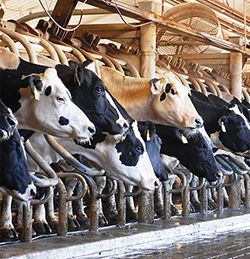 The list of reasons why dairies should constantly work to lower their herd somatic cell count (SCC) is both long and old. Reasons that were good decades ago have only gotten better, and many new ones have been added in recent years, particularly as researchers have established a strong correlation between mastitis and reproduction.
The list of reasons why dairies should constantly work to lower their herd somatic cell count (SCC) is both long and old. Reasons that were good decades ago have only gotten better, and many new ones have been added in recent years, particularly as researchers have established a strong correlation between mastitis and reproduction.Setting a smart SCC goal has always been hard for U.S. dairy producers because of how stupid the national legal limit of 750,000 is. This inflated number gives the impression that 500,000 is good and 400,000 is great. In reality, 400,000 is marginal at best - and proof that there are both problems and room for improvement.
SCC goal-setting was a featured presentation at the recent 2013 meeting of the National Mastitis Council July 23 and 24 in Portland, Maine. Frank Welcome, D.V.M., a member of the Quality Milk Production Services (QMPS) team at Cornell University, summarized experiences seen in the "400K Program" working with dairies in the Northeast to reduce bulk tank SCCs. It has eight key components:
- Use a team approach.
- Develop an udder health plan.
- Do a farm mastitis risk assessment.
- Develop a plan to reduce infection risk.
- Participate in a DHIA cell count program.
- Identify what pathogens are on the farm.
- Analyze cell count data.
- Do ongoing monitoring and surveillance.

The author has served large Western dairy readers for the past 36 years and manages Hoard's WEST, a publication written specifically for Western herds. He is a graduate of Cal Poly-San Luis Obispo, majored in journalism and is known as a Western dairying specialist.








